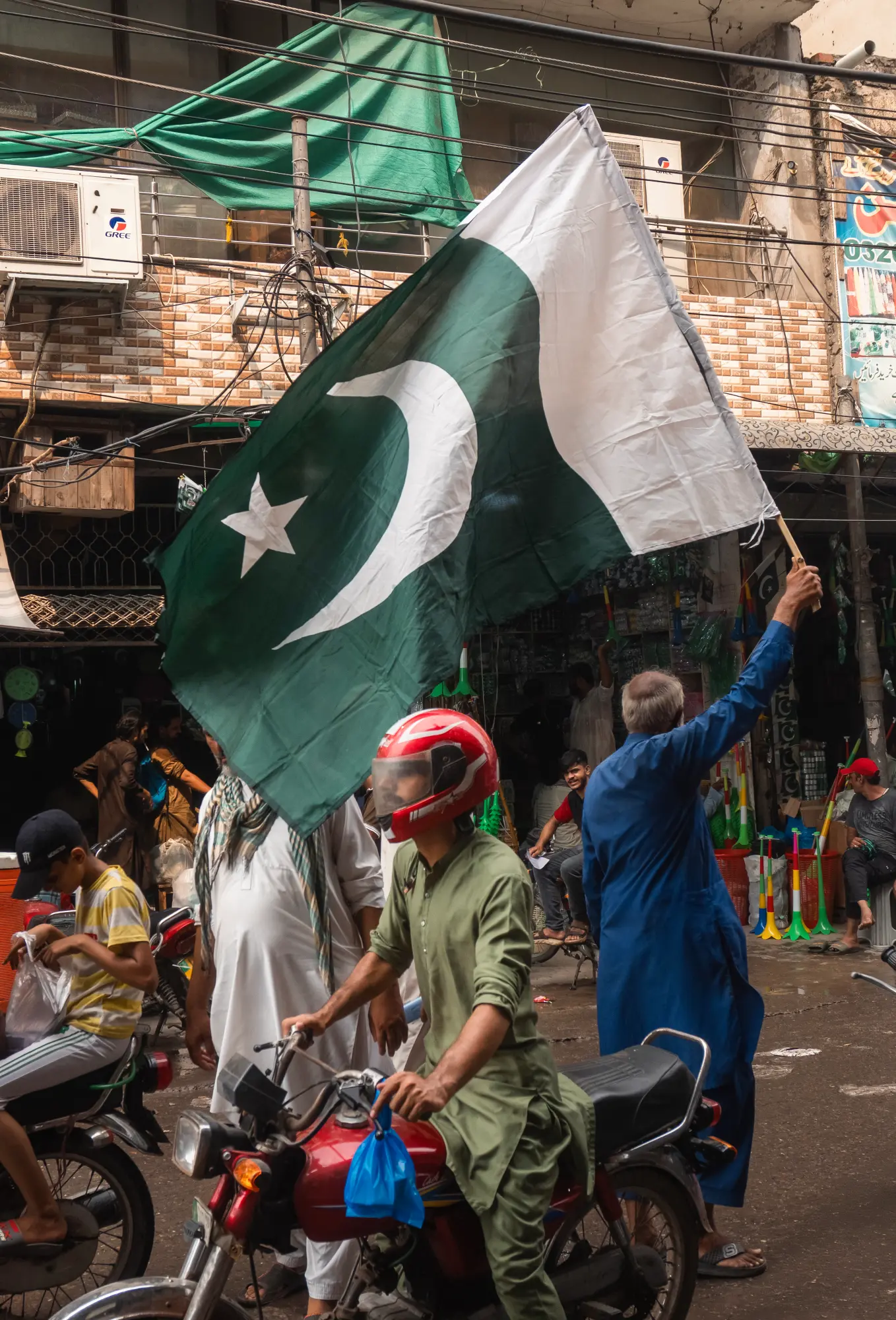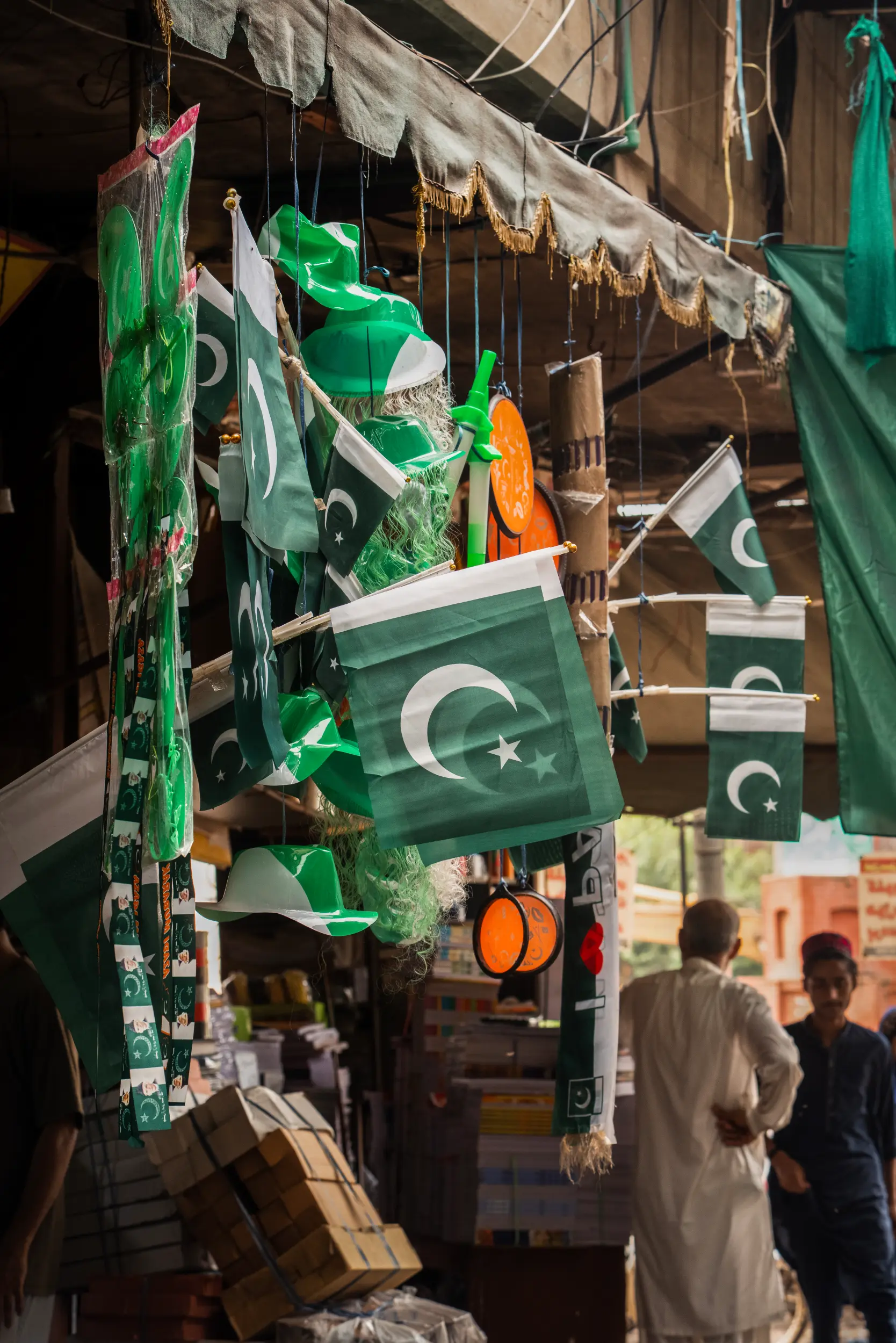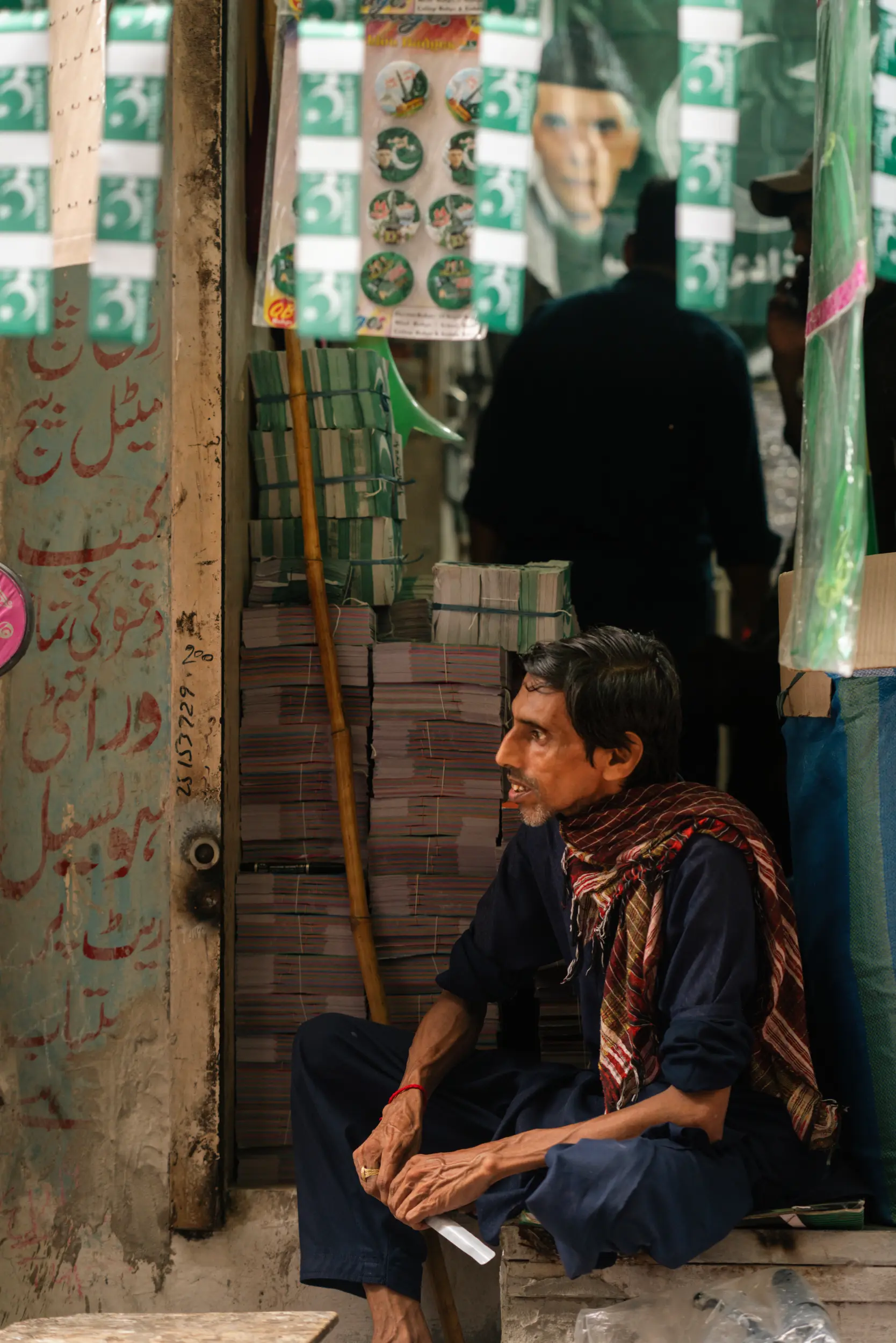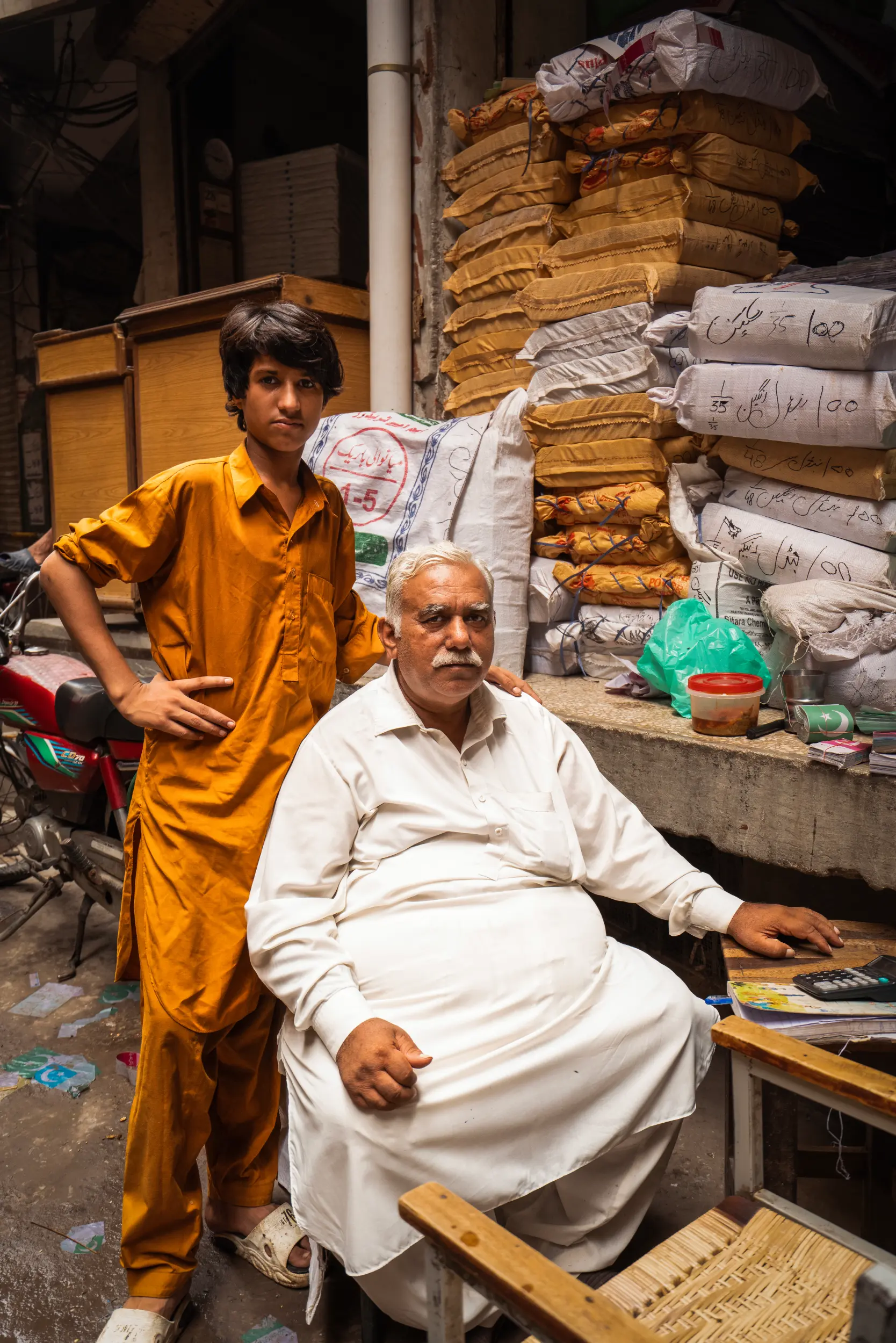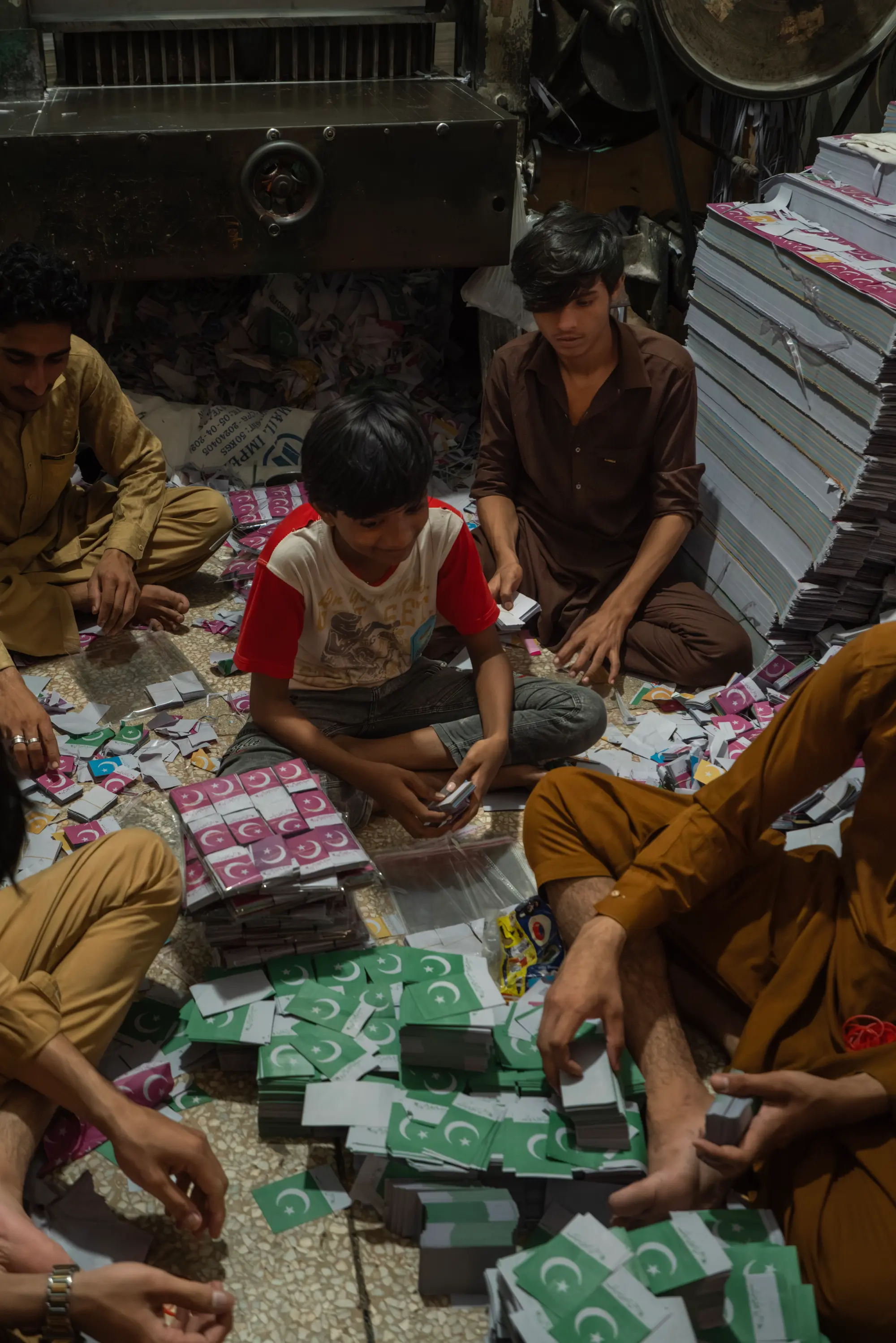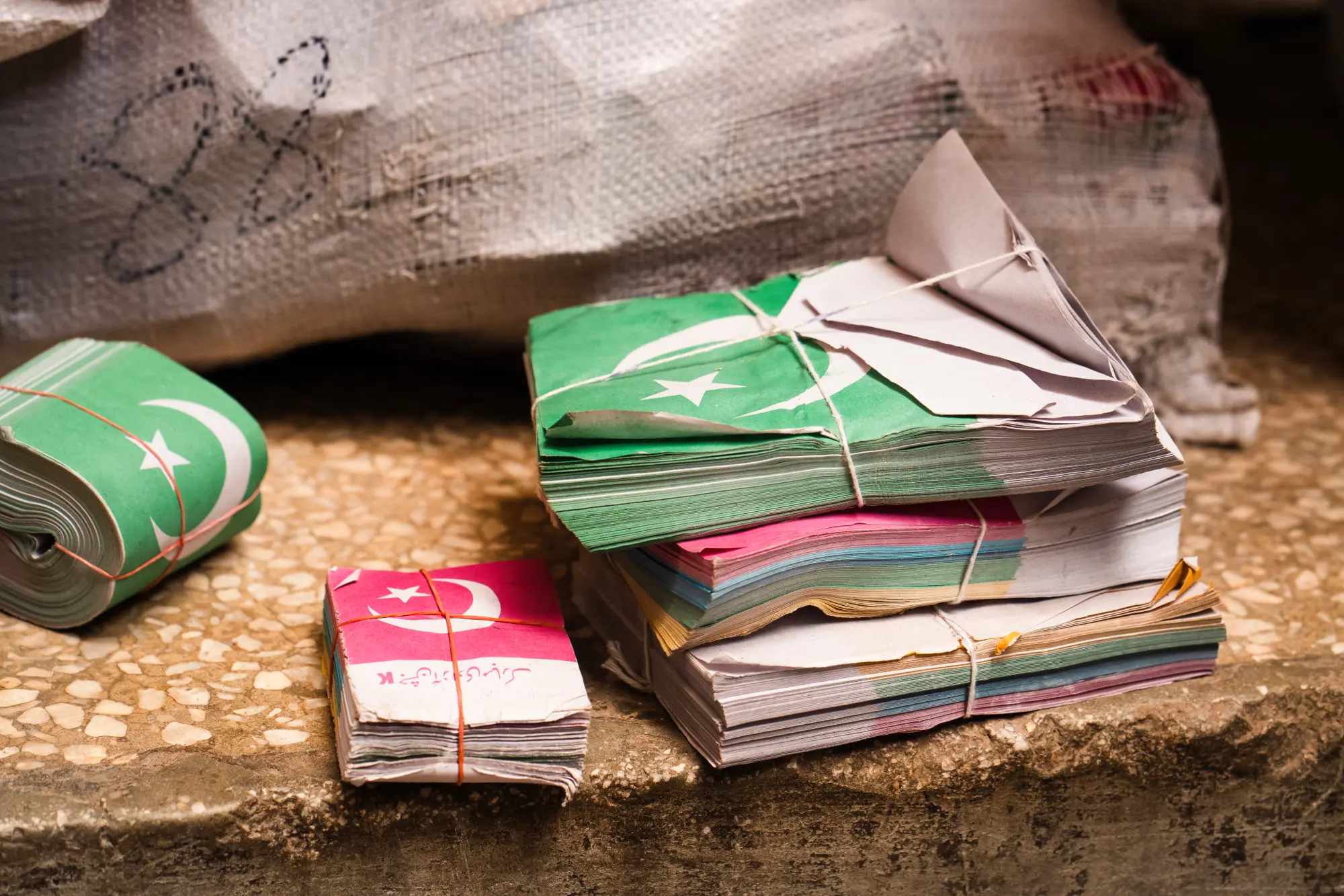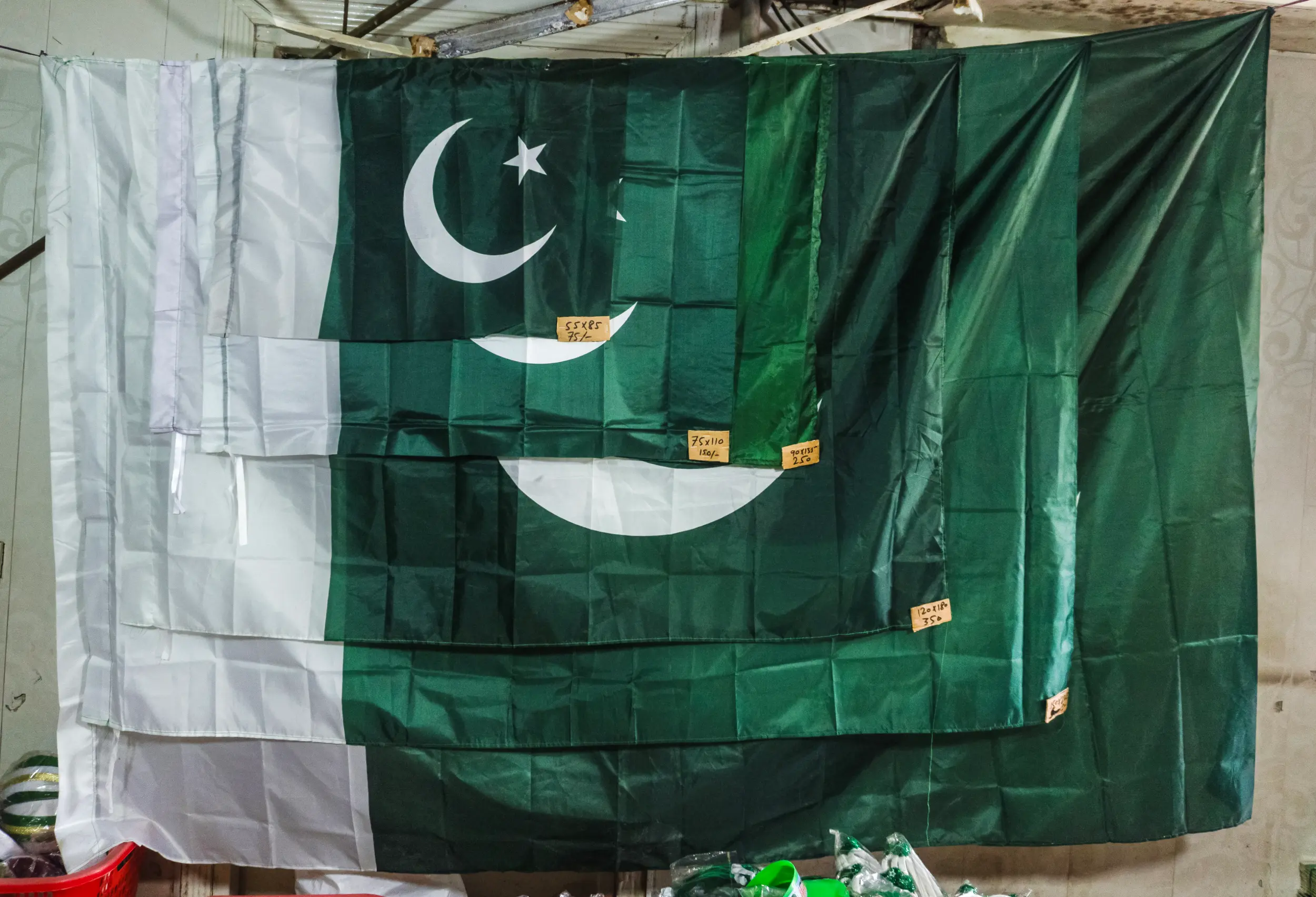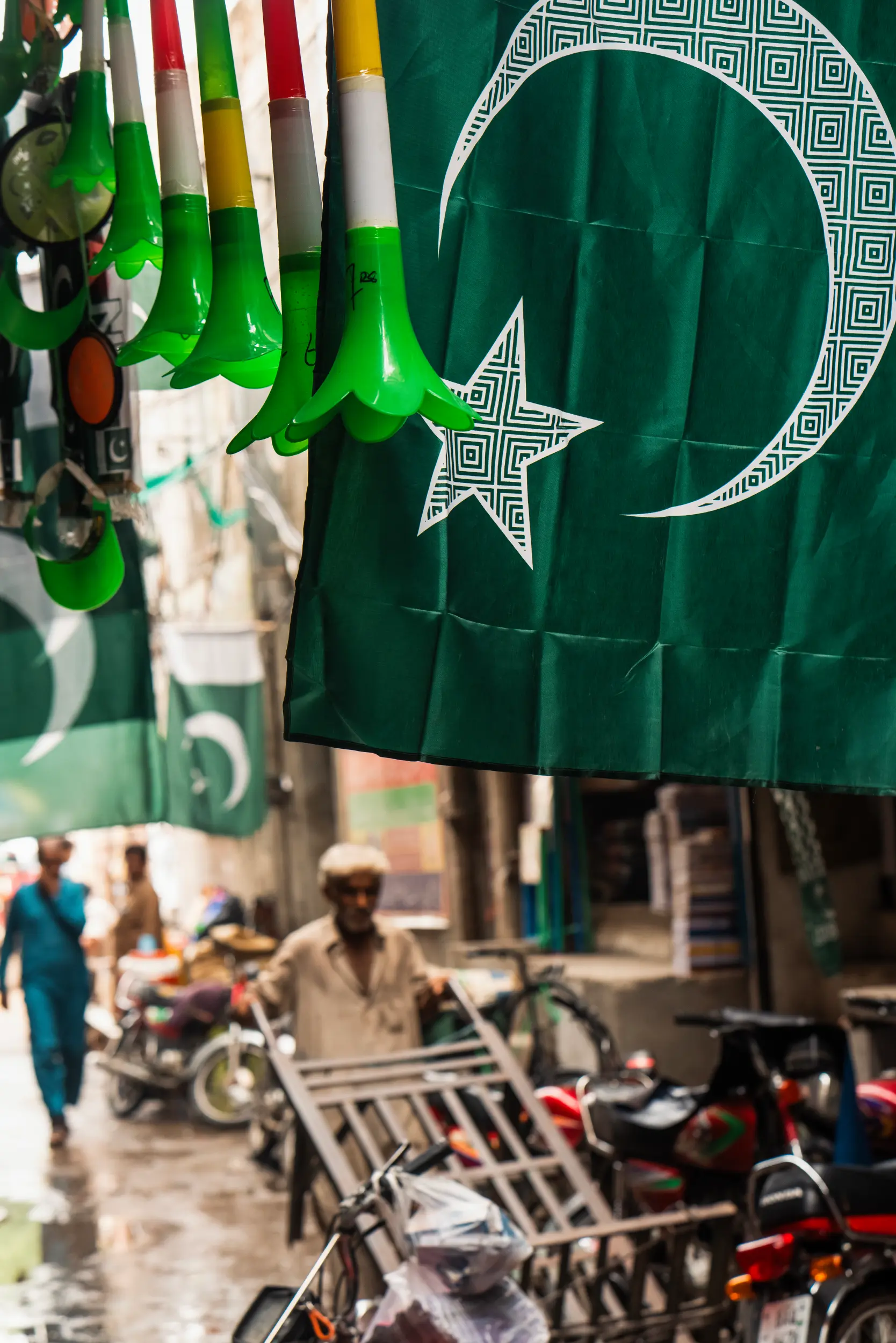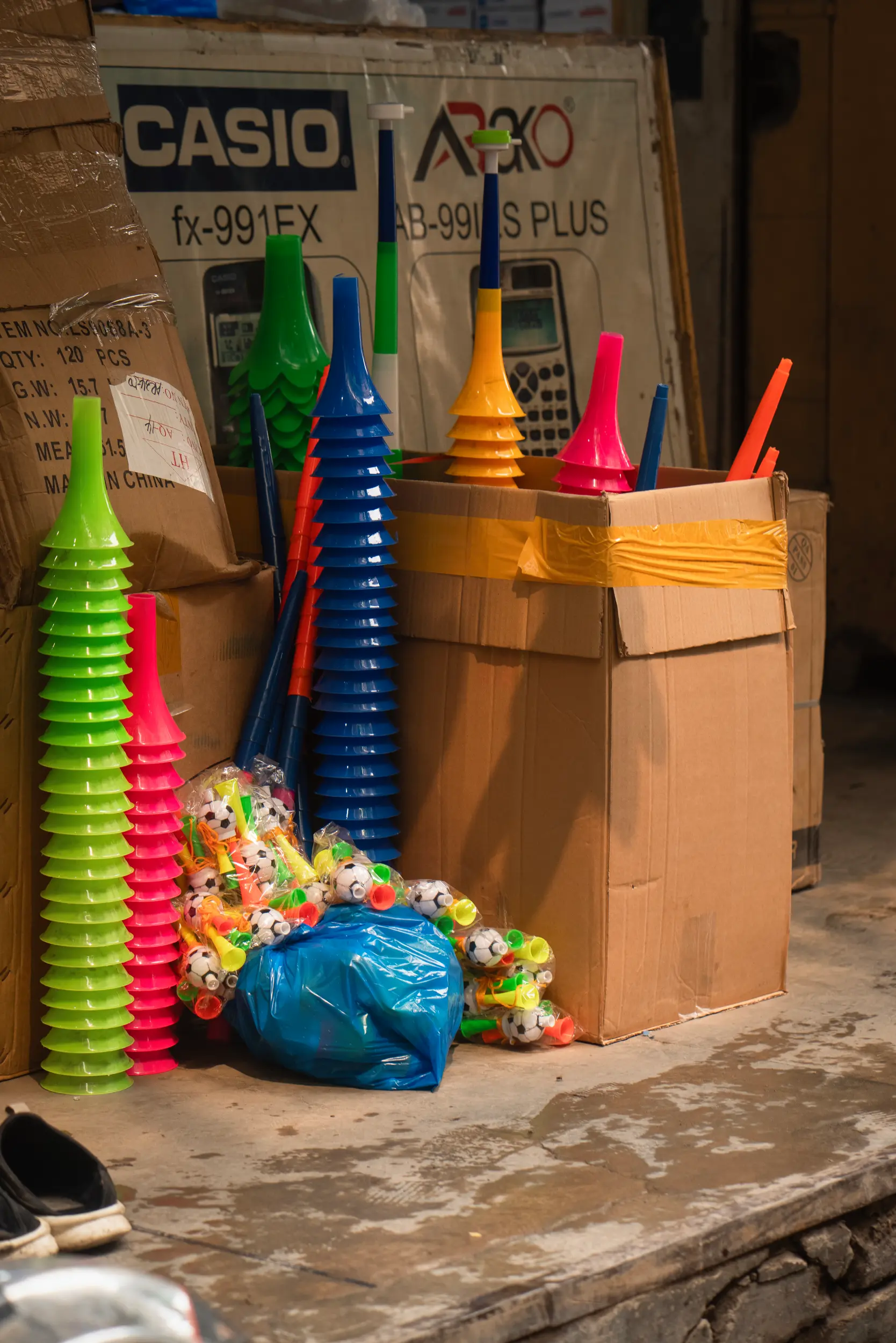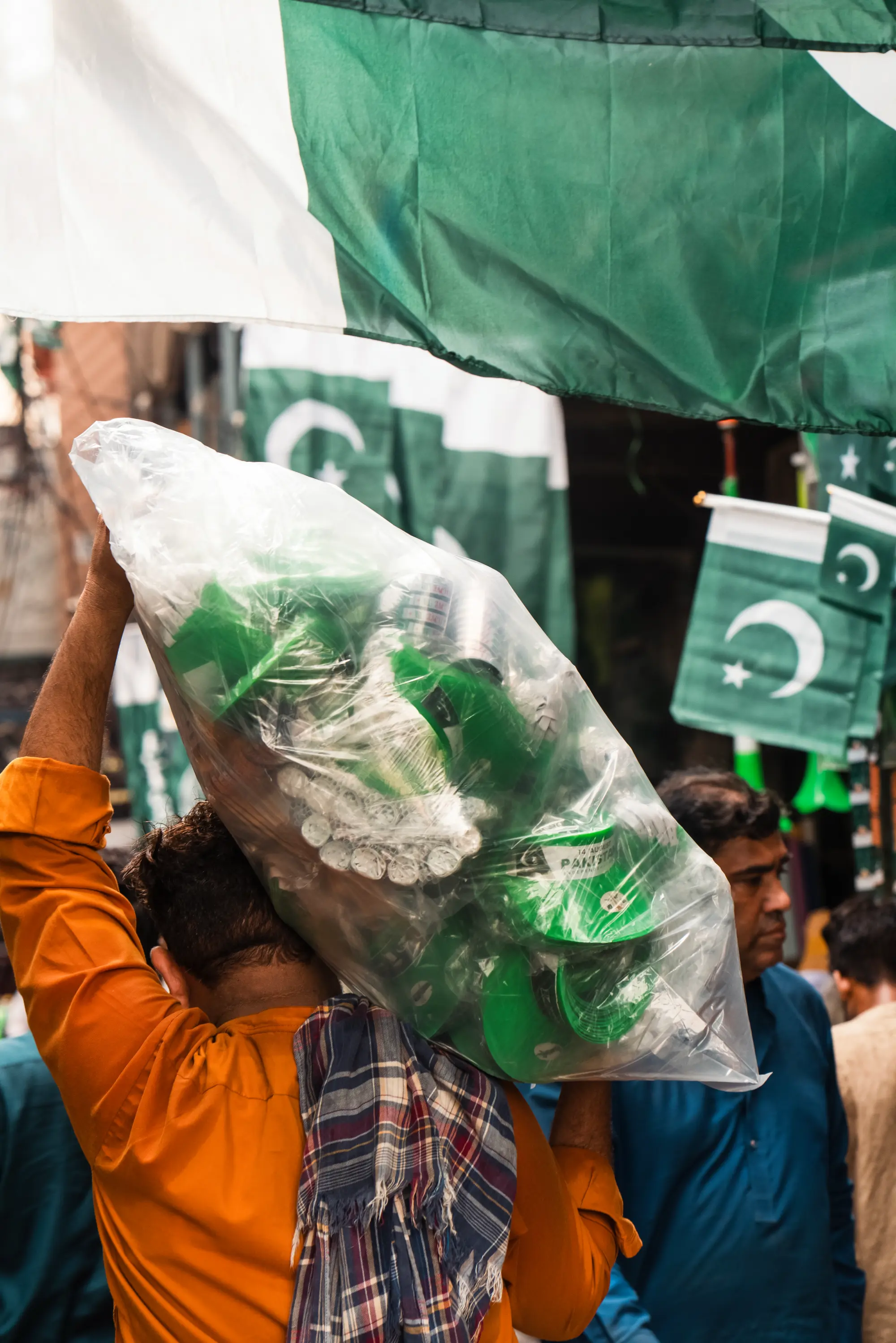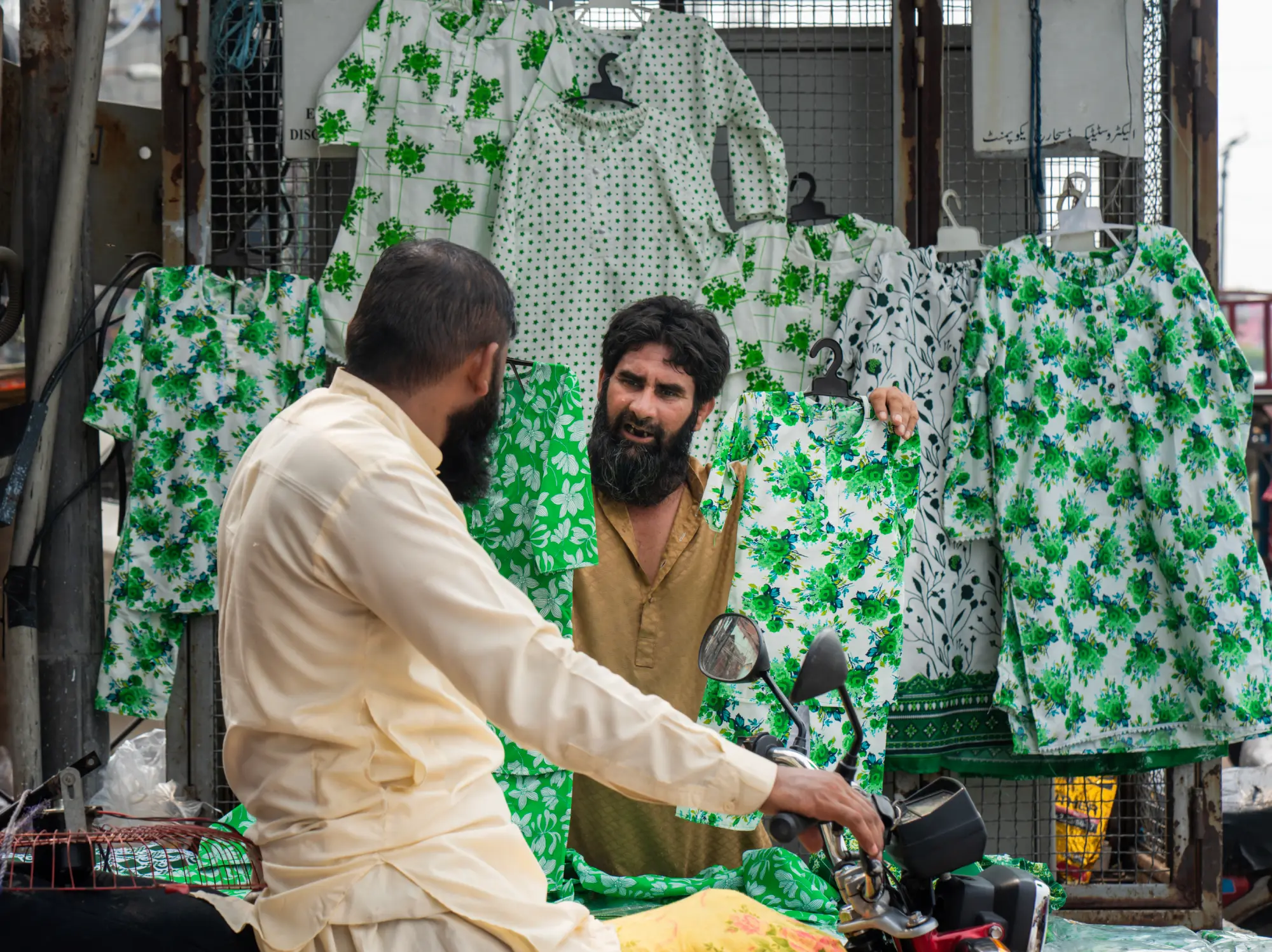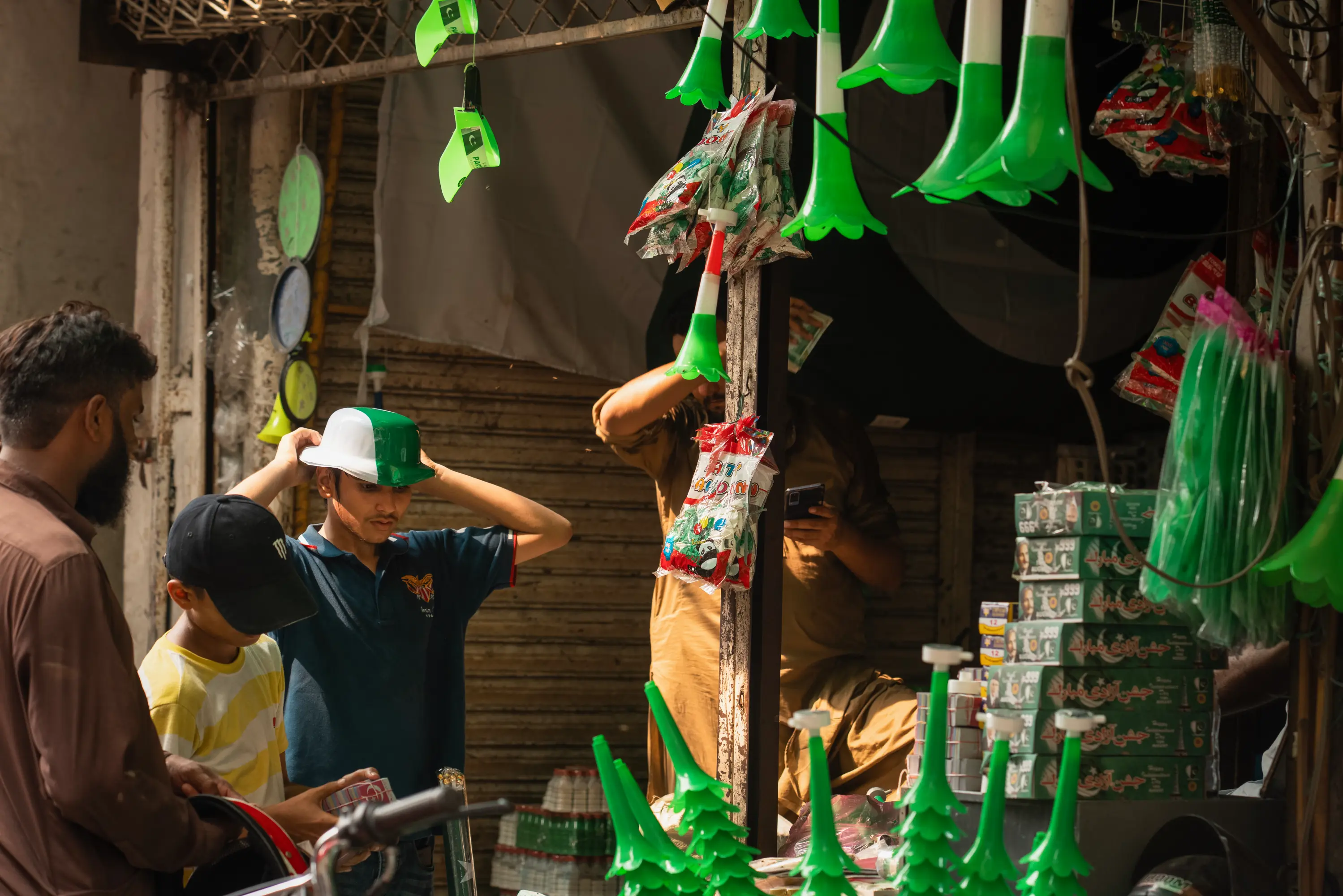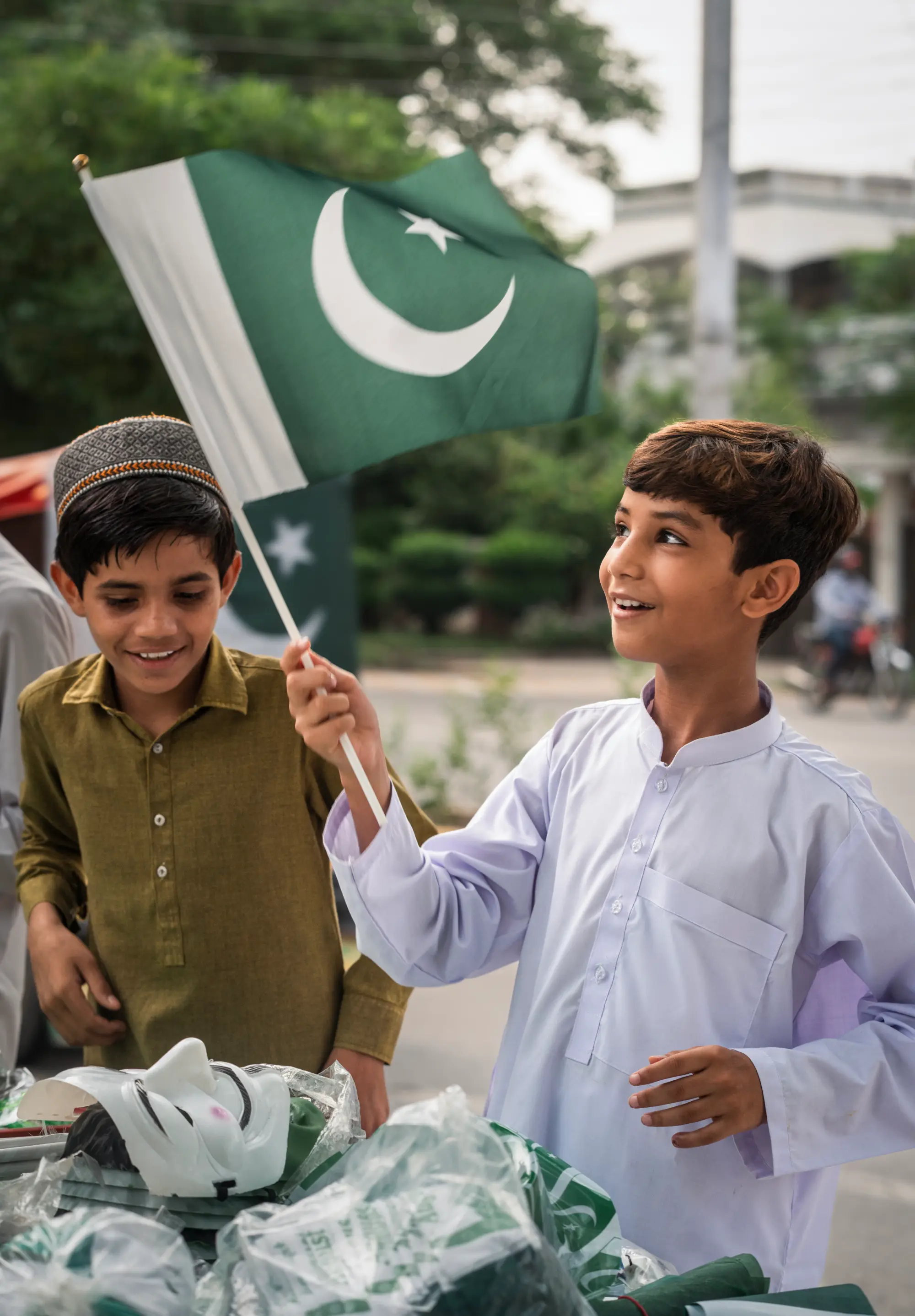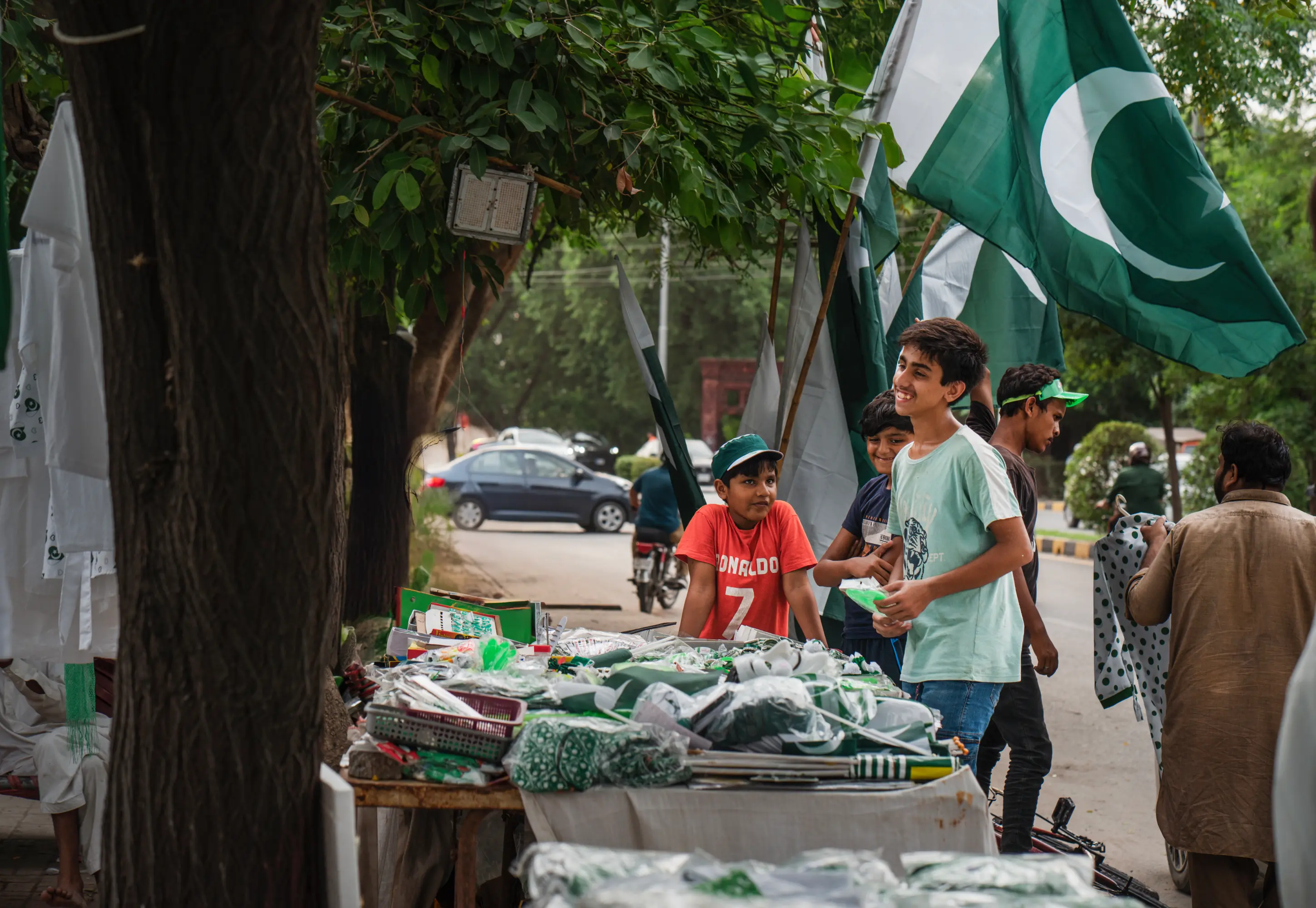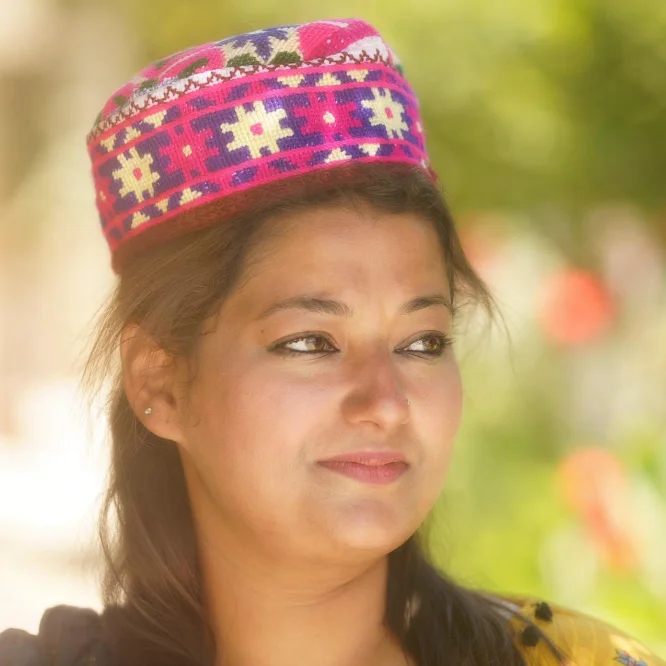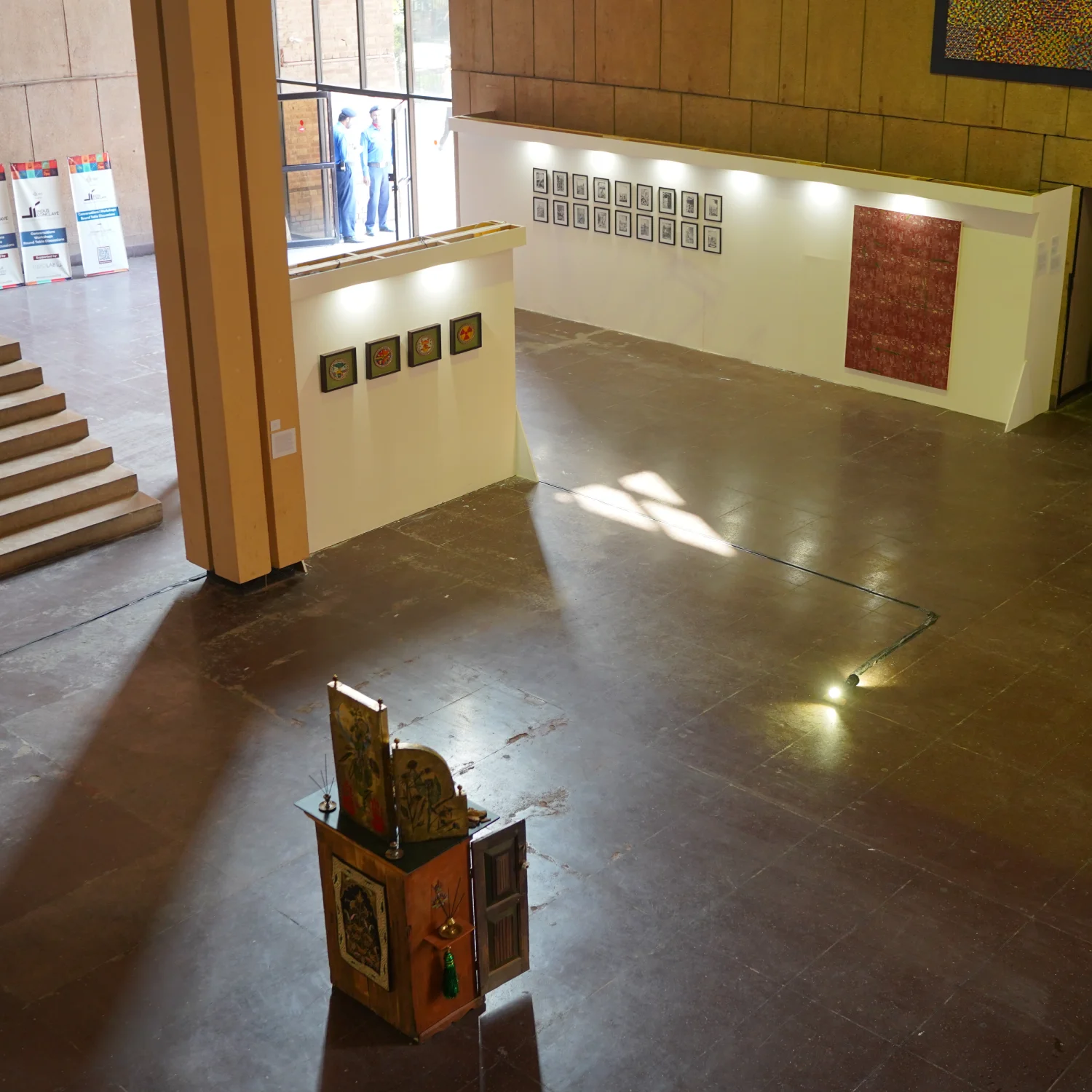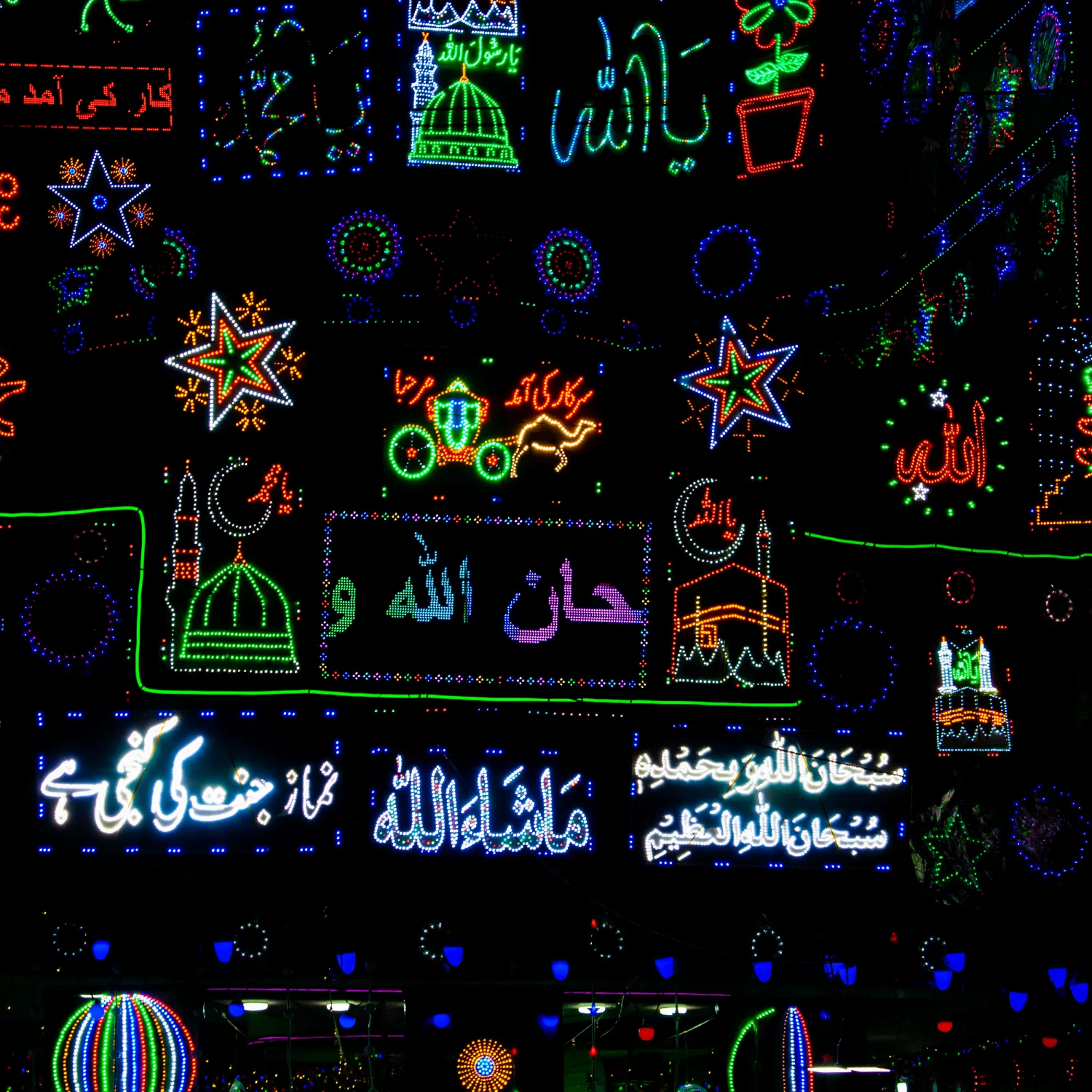Every August, cities across Pakistan are covered in the green and white flags and jhandiyan to mark Independence Day. This August, instead of photographing the celebrations, I decided to trace the origins of the Independence Day paraphernalia in Lahore. My search led me to the heart of the trade: Urdu Bazaar. With my camera in hand and a sense of curiosity, I wandered through its narrow lanes, ready to capture the vibrant yet complex world where the symbols of freedom are bought and sold.
Everywhere I turned, the streets bloomed with green and white. Flags hung from shopfronts, wrapped around mannequins, printed on paper caps, strung up in tight lines that crisscrossed above the street. In Urdu Bazaar, patriotism comes packaged, priced and stacked in wholesale piles from hand-sized paper slips, to stalls of printed balloons. For vendors, the flag is livelihood; for customers, it is a badge of belonging.
Midway through my walk, I began asking vendors where I could find jhandiyan being cut. Almost every finger pointed me towards the same place: a narrow side street. There, in a modest, dimly lit room, was the market’s only flag-cutting centre. Its owner, Malik Khalid, a retired schoolteacher, greeted me with the kind of warmth that slowed my hurried pace. He offered me a seat, and proudly led me through his workshop, a tight space where stacks of printed sheets waited to be trimmed, sorted, and strung.
As he worked, Malik Khalid told me he is the only person in the entire market who does this job. His hands, once used to holding chalk, now guided blades and machines, turning raw paper into neat strips of fluttering green and white. In this tiny room, the grand narrative of independence was quietly pieced together, one flag at a time.
Back in the narrow streets, the tone shifted again. Amid the flags, jhandiyan and green-painted faces, another kind of Independence Day trade was booming, the sale of ‘باجے'. Stalls were stacked high with them, their colours just as bright as the flags but carrying none of their symbolism.
And then, just when the noise seemed to consume everything, a quieter scene appeared, a rose garland vendor walking through the same street, his flowers a soft contrast against the sea of polyester green and white. It was a fleeting moment, but a reminder that the spirit of celebration isn’t only in the mass-produced symbols; it’s also in the small, human gestures that carry their own quiet dignity.
My walk ended under a stretch of white cloth draped across the street, filtering the light into a pale, almost ethereal glow. In our flag, the white represents the country’s minorities, a promise of inclusion that too often exists more in symbolism than in practice. Standing there, beneath this fabric sky, I thought of how easily such ideals can be overshadowed, and how powerful they could be if truly upheld.
Click images to view in full screen


